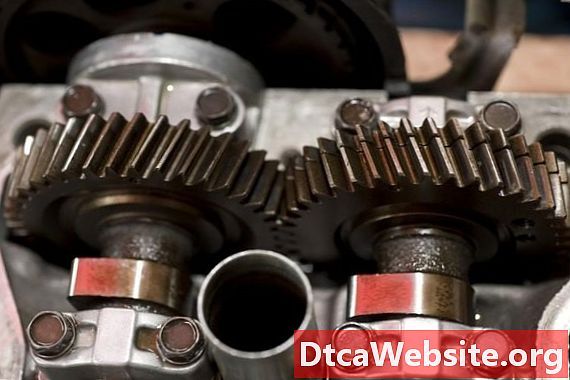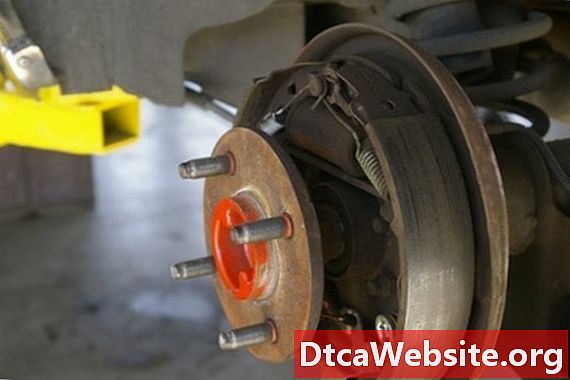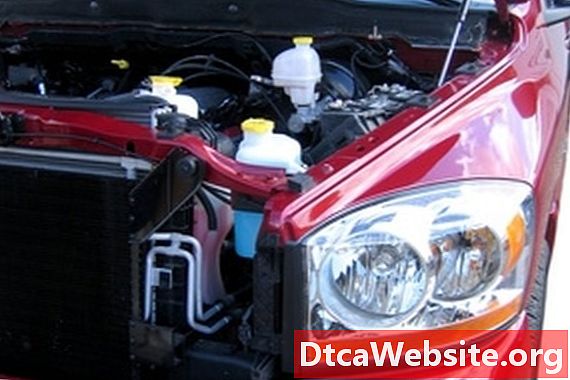
Contenu

Computerized automotive systems are an ongoing evolution, continually improved from year to year to provide more efficient and more powerful cars. The basic fundamentals of the internal-combustion engine have not changed much since the beginning of the 20th century, but the need for tighter emissions standards coupled with fresh technology have made the on-board computer indispensable.
Computers Come of Age
From the automobiles inception to the late 1960s, car engines were manufactured with simple designs and mechanical control parts, such as distributors and ignition timing controls. Emissions were not relevant, as efficiency gave way to horsepower and speed. As the 1970s began, federal mandates regarding a cars emissions were beginning to appear, and the fuel crisis of 1973 to 1974 showed many that larger and more powerful motors were not as important as economy. Most cars of this time period were fueled by carburetors, and very few ran with mechanical fuel injection, so the need for on-board computers evolved slowly. The actual physical requirements for an on-board computer had not been miniaturized to the point where they would fit into automobiles by the mid-1970s; it would take another decade before the microchip would be small enough to become practical.
Ignition Control Modules
As the gas shortages continued into the late 1970s, car manufacturers began to implement small, solid state circuit boards to control the ignition timing and spark, usually mounted into the engine compartment at the firewall. The hand-sized box would normally burn out within several years, requiring replacement. Several manufacturers experimented with computer-controlled carburetors into the early 1980s, using a crude microchip to meter the rate of fuel mixture and advancement of timing, but these proved unreliable and difficult to repair. The future of computer-controlled ignition resided in fuel injection, not carburetors, and through the middle of the 1980s almost all car makers pushed for an industry-wide changeover to integrated circuit controlled fuel injection.
Fuel Injection
The now complex carburetor gave way to fuel injection, mainly because of the ability of the computer to precisely measure the fuel into the engine. Carburetors had a number of disadvantages, such as vapor lock and altitude mixture problems -- things that a computer could easily solve with adjustments to the fuel injection system. As the microchip evolved, it became smaller and more powerful, and advancements in shielding could protect it from heat and moisture. Early automotive computers could be accessed with a standardized port in the dashboard, called OBD, or On-Board Diagnostics. This system utilized several sensors placed throughout the engine to relay problems to the technician, streamlining repairs.
OBD Comes of Age
As the 1980s gave way to the 1990s, on-board computers were deigned with more and responsibilities. Not only required to process the fuel mixture and timing, they now could be relied upon to control most of the electrical processes of the auto, including climate controls, braking systems and odometer. The computer became an integral part of the machine, upgradeable and customizable, giving the backyard mechanic incredible control over the powertrains abilities. Using a laptop computer to interface with the OBD port, the programming of the cars microchips became second nature to racers. The engines performance could be tweaked while the car was in use, and pertinent data could be relayed to the driver in real time. As the OBD system standard was improved upon, the OBDII, or OBD2 system was the next generation of auto computers. Powerful and malleable, this system eliminated the need to "sniff" tailpipes during emissions testing and allowed the sensors to relate the effectiveness of the emissions control systems.
Ghost in the Machine
In the beginning of the 21st century, we began to rely on computers to do much more than just monitor and control the engine. With navigation systems, advanced climate controls, communications and entertainment devices, the on-board computer has become the most important part of the cars electrical system. Most automobiles have more computing power than a desktop computer from the early 2000s and can monitor everything from coolant temperature to the ambient temperature of the interior cabin and make automatic adjustments accordingly. As vehicle manufacturers improve on the internal-combustion engine, the future of the on-board computer is only just beginning; computers will be required in automobiles, gasoline powered or not, for decades to come.


